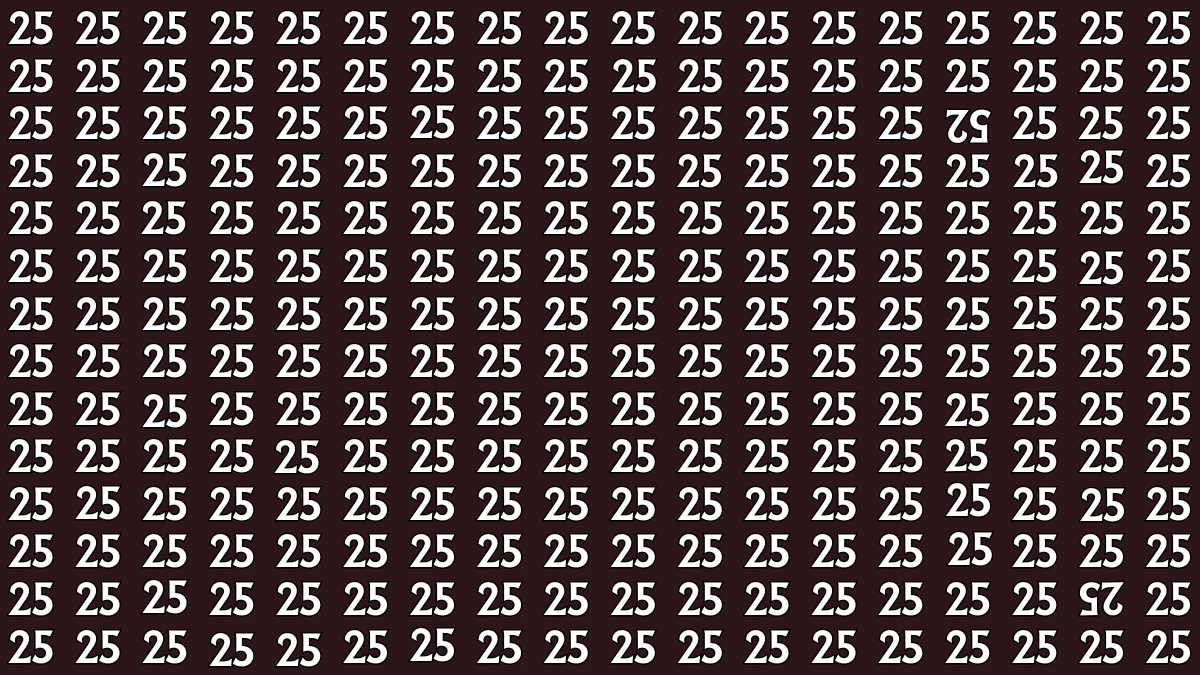Optical illusions are a fun way to put your observation skills to the test, and this one is trickier than it looks. In this puzzle, the numbers 52 and 25 are cleverly inverted and hidden among rows of repeating 25s. At first glance, everything seems identical, but a closer look reveals the twist. The challenge? Find both hidden numbers in just 5 seconds.
Why This Illusion is Tricky
The digits 2 and 5 often appear together, so your brain automatically recognizes “25” as a normal sequence. When the order is reversed to “52,” or slightly altered, your eyes skim past it without noticing. This is because the brain tends to fill in gaps and complete familiar patterns, which makes spotting the odd ones harder than expected.
The Science Behind the Puzzle
This illusion works on the principle of pattern recognition. Our brain quickly processes repeated patterns to save time, but in doing so, it often overlooks small differences. In this case, the inverted numbers blend seamlessly with the rows of 25s, tricking even sharp observers into missing them at first glance.
Tips to Spot the Hidden Numbers Faster
Pay attention to the order of digits—does the 2 come before the 5 or after?
Scan slowly instead of rushing; speed often causes mistakes.
Break the puzzle into sections and check row by row.
Practice regularly with similar illusions to train your brain to catch details quicker.
Why People Love These Challenges
Number-based optical illusions have become very popular online because they are quick, competitive, and fun to share. People enjoy racing against the clock to see how fast they can solve them, then compare their results with friends and family. They’re lighthearted, yet surprisingly challenging.
Benefits of Playing Optical Illusion Games
Improves focus and attention to detail.
Strengthens memory recall by training the brain to spot subtle changes.
Enhances problem-solving skills through careful observation.
Provides a stress-relieving break in just a few seconds.
Can You Beat the 5-Second Challenge?
Most people take around 8–10 seconds to spot both the inverted numbers, but only those with exceptional attention to detail can manage it in under 5. If you succeed, it’s a sign of above-average focus and sharp observation skills.
Final Thoughts
The 52 and 25 Optical Illusion shows how even the smallest switch can confuse the sharpest eyes. These puzzles are more than just entertainment—they keep the brain active, alert, and engaged. If you enjoyed solving this challenge, share it with your friends and see who can find the hidden numbers the fastest.
